A River Re-imagined: Transforming the L.A. River
Mention the L.A. River and most people conjure up the drag racing scene in the movie Grease or crime stories with a noir bent, featuring the river as a dumping ground for urban decay. Admittedly, before attending a river clean-up organized by Friends of the Los Angeles River (FoLAR), River Network, and corporate partner Anheuser-Busch (AB), I’d never been to the L.A. River despite living less than an hour away for the last decade and having a 5th-generation native Angeleno mother from East L.A. The irony that I’d made a career traveling to rivers around the globe but had not yet visited the one that’s most significant to my own heritage hit me as I arrived to Lewis MacAdams Riverfront Park in Glendale, California, to report for clean-up duty.
“I never realized that the L.A. River was actually a river,” said one clean-up participant, gazing from the parking lot to a cormorant perched on a river rock, its wings gracefully outstretched and drying in the breeze created by the nearby freeway.
Equipped with gloves, trash grabbers, and garbage bags, our group of almost sixty descended into the spongy terrain of the Glendale Narrows, a 9-mile navigable section of the Los Angeles River. There were as many nervous jokes about finding dead bodies as there were Cottonwood trees to peek behind. This fear, however, proved only to be a threshold we crossed over, for as the group went deeper into the still pockets of cool shade the sniggering subsided into a peaceful quiet. Only the river spoke. Despite being surrounded by concrete, cafes, and telephone towers, the river’s voice remained. As the river’s lilting gurgle drowned out the freeway drone behind us, phones were pocketed and the city fell into background. Front and center were shrieking red-tailed hawks, hearty sunlight, and calm pools feeding Class II rapids—the familiar markers of a pleasant morning on the river.
Picking up trash in this unexpected nature didn’t seem like a chore but part of a meditation. There were blankets (“I feel like Linus,” quipped worker Dan Dixon dragging a blue blanket behind) and tab-top cans, a connection that didn’t escape Anheuser-Busch employee, Raymond White, who worked the clean-up.
A corporate sponsor of this particular clean-up event (and many others like it coordinated by River Network since 2010) Anheuser-Busch (AB), through its Better World partnership with River Network, has enabled its employees to collect 840,000 pounds of litter and plant 63,000 trees and native plants at 152 events. Throughout the year, but especially around the United Nation’s globally recognized World Environment Day, the company brings in employees and funding to help facilitate river clean-ups. In 2018 alone, the partnership collected 270,00 pounds of trash and planted 5,000 trees/native plants based on local need across the United States. As Michael Charles, an assistant Brew Master on his third river clean-up put it, “River clean-ups are a good time and our environment is important. AB wants to do our part to value our natural resources and reduce our water footprint while giving back and being in the communities.”
Certainly, there is global need for river restoration, and partnering with local non-profits to best target areas of need is the most effective way for AB to help rivers. River Network, with its vast grassroots network of river protectors, serves as the connector for these relationships. FoLAR was a natural choice for the clean-up, with a 34-year history of defending and restoring the L.A. River. Founded by Los Angeles Poet, Lewis MacAdams, FoLAR has been in the game so long the state-owned park managed by MRCA (Mountains Recreation and Conservation Authority) where we met for the clean-up was named for him, and the group’s volunteers follow his leadership with disciple-like fervor.
Johanna Hackett, a long-time FoLAR volunteer and now FoLAR’s Operations and Partnership Manager who organizes clean-up events joked, “Lewis is one of those people I would join a cult for.” After witnessing extreme ocean pollution in the 80s and 90s, doing her own research and volunteering with Heal the Bay and Surfrider, Hackett figured out that the river is where a lot of ocean pollution originates. That’s when she started working with FoLAR. “The Los Angeles River is the pre-emptive of what goes into our oceans and what’s poisoning our oceans,” Hackett said.
In its 51- mile journey from the San Fernando River to the Pacific Ocean in Long Beach, the Los Angeles River provides fresh water to fourteen cities in the Greater Los Angeles Area. It also carries the waste of these cities downstream.
By FoLAR’s count, the non-profit pulls 200 tons a year out of the river. “That’s 200 tons of trash that’s not going into the ocean. That’s a really big deal, and very personal for me,” Hackett explained. “That’s why I love working with FoLAR – the river speaks to so many Angelenos regarding water, water quality, trash, green spaces. It’s a very, very important part of our city.”
With urban rivers, the challenge is in transforming our relationship to the waterway—how communities see it, and what use it provides. As FoLAR is quick to point out, many regions around the world are realizing that urban rivers are precious resources. FoLAR’s work includes cleaning up the river’s trash, but also reimagining what the river could be to the city by helping to shape the Los Angeles River Revitalization Master Plan (LARRMP), a collaborative plan created by public agencies and stakeholders to create a vision for a restored River in the City of Los Angeles. The ambitious plan connects to and supports dozens of programs and plans from restoring habitat to creating bike paths.
The Glendale Narrows is one such example of how the river is capable of being transformed. Because of natural springs in the area, the concrete storm canal built by the Army Corp of Engineers in the late 1930s wasn’t able to harden, and the resulting soft bottom river bed supports native plants and animals in their natural state. While walking across bona fide sand on the river’s shore, I spotted a Belted Kingfisher, and wondered about what was attracting it. Turns out there are carp, largemouth bass and green sunfish all along this stretch.
When I peered deep down into a sun-lit eddy, I saw a school of small fish and something like possibility ignited in my chest. I thought about how this sand held the remains of my grandmother’s and great-grandmother’s lives lived by the river. When I listened closely to the river’s surprisingly strong voice, the message was clear: Shelter. The river has sustained and sheltered millions of people over millennia, from the Gabrielino-Tongva Chumash to my own ancestors. We have overtaken its power, but still it shelters the forgotten and lost among us, as evidenced by the sleeping bags buried in its belly, unearthed by our trash-collecting group.
All told, a half-ton of trash was removed from a quarter-mile stretch of the Los Angeles River during our clean-up. It’s not an easy transformation from wasteland to precious resource, but it’s not impossible. As Lewis MacAdams said, “If it’s not impossible, I’m not interested.”
Nearly 60 people with a vision of revitalization enjoyed post clean-up tacos. Their camaraderie and laughter is the heart of a river refusing to vanish—and perhaps it’s the strength of the city that flows from here, a current that refuses to be subdued.


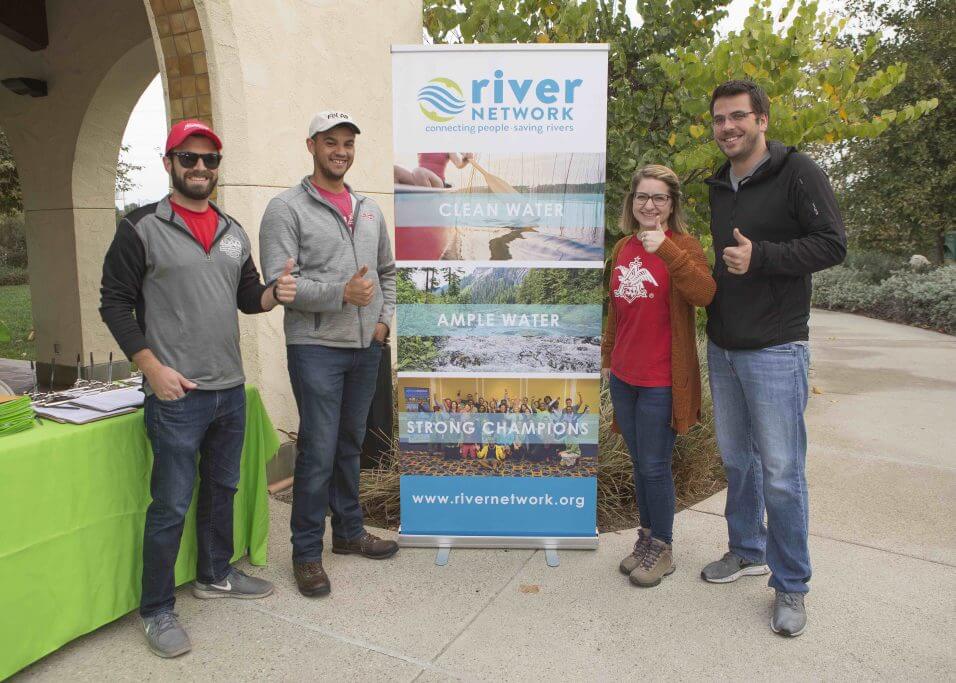
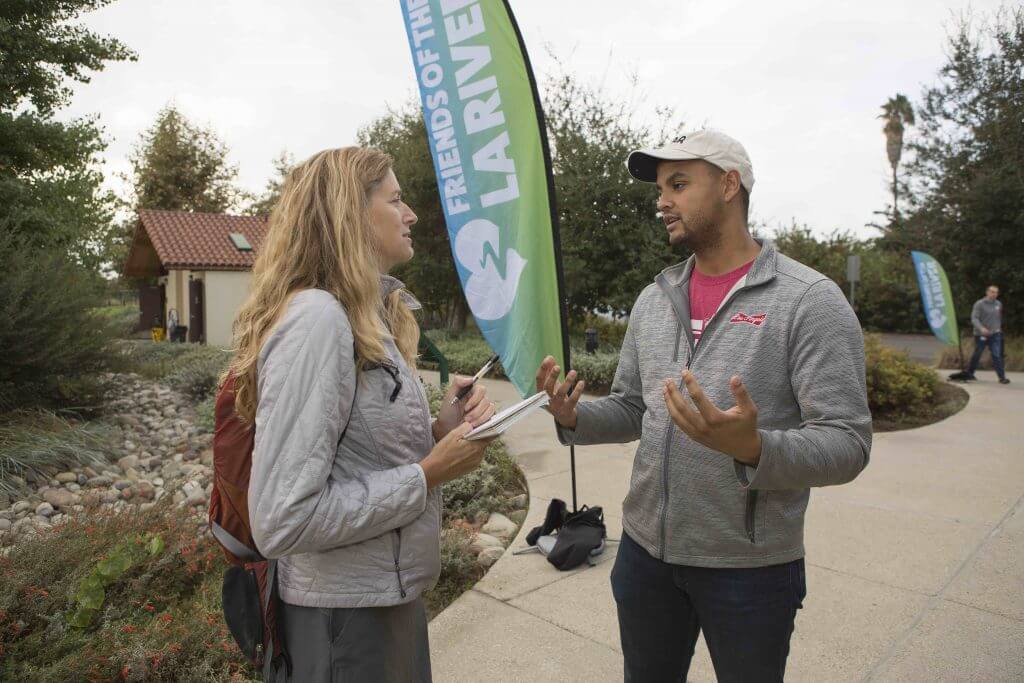
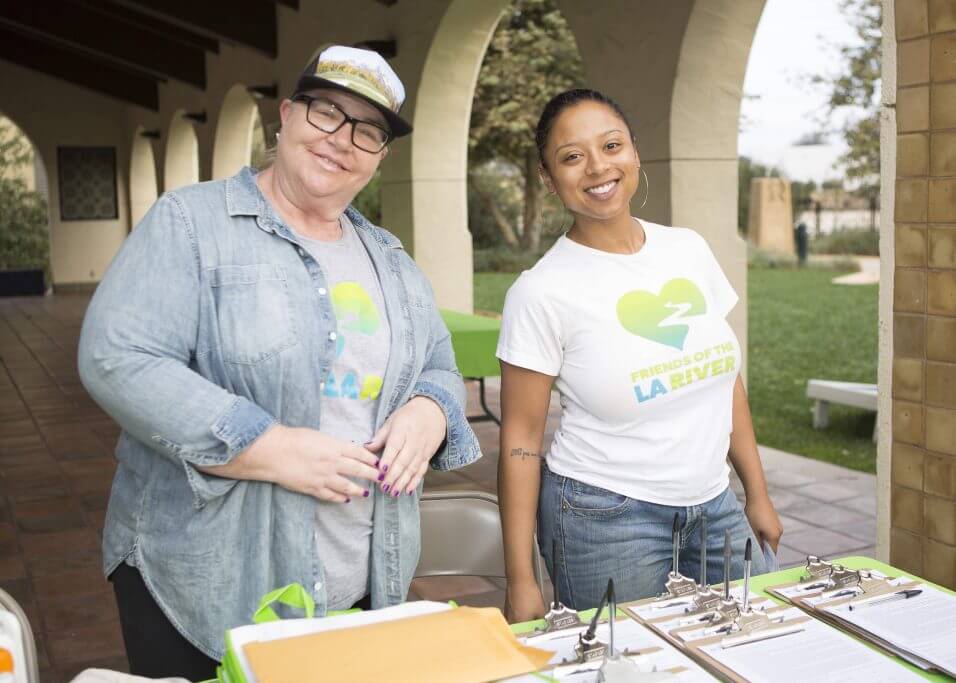
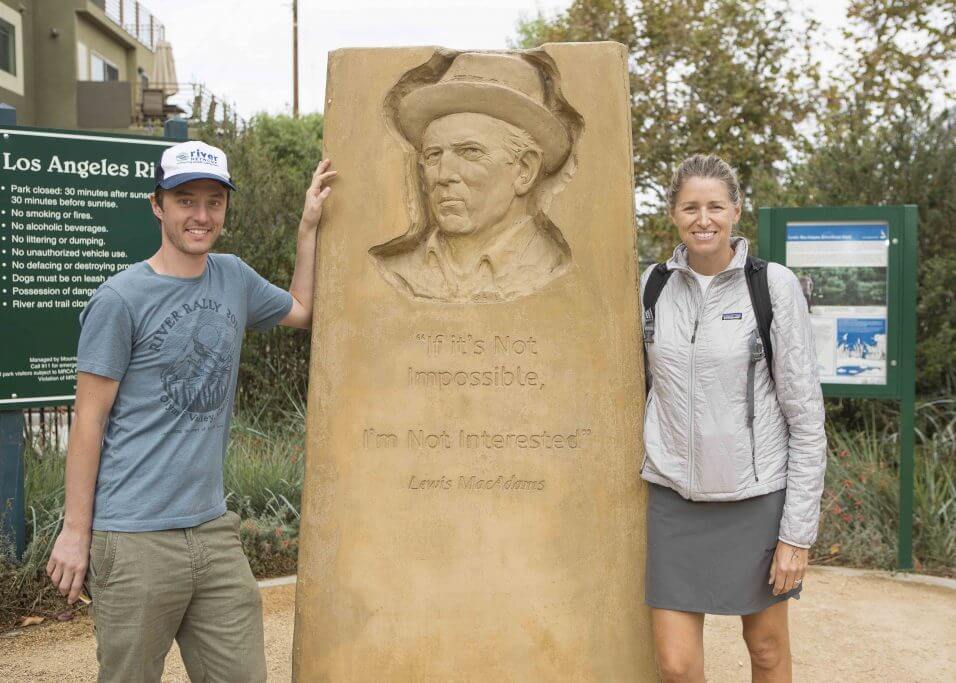
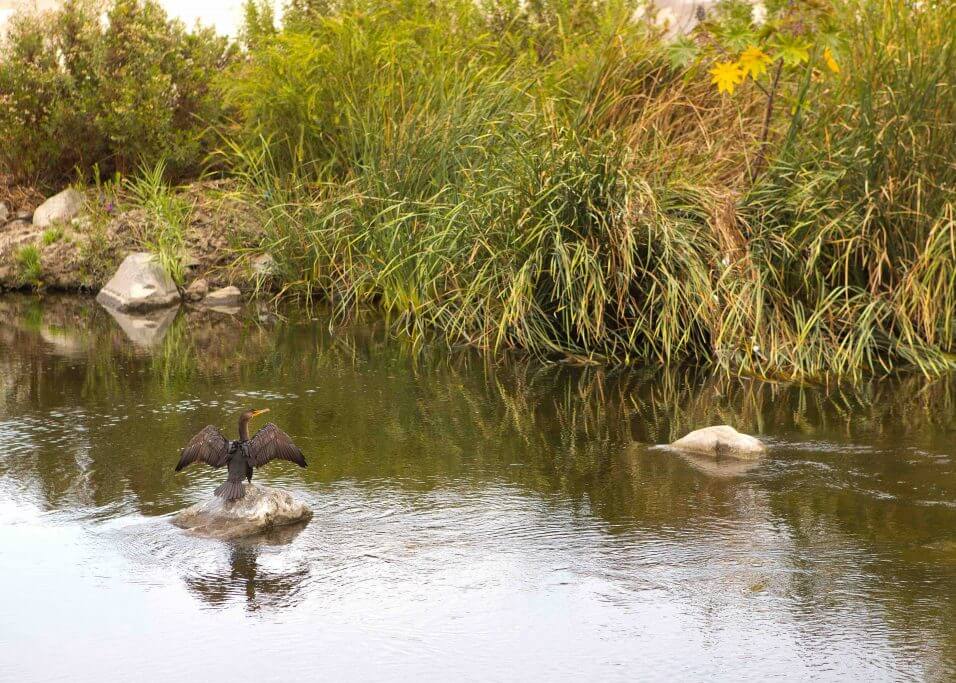
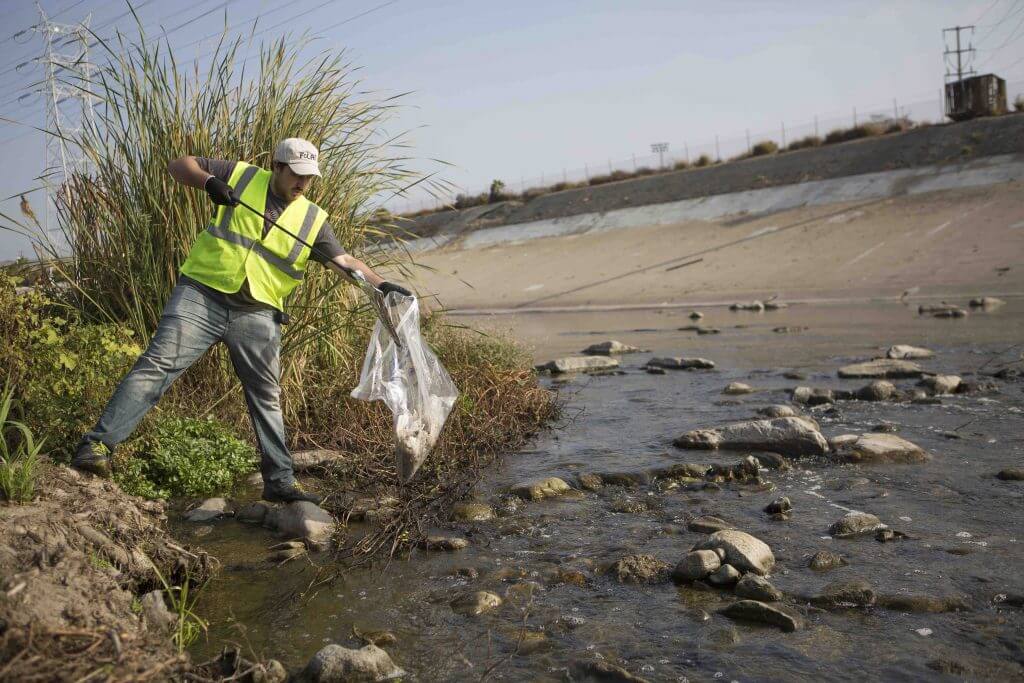
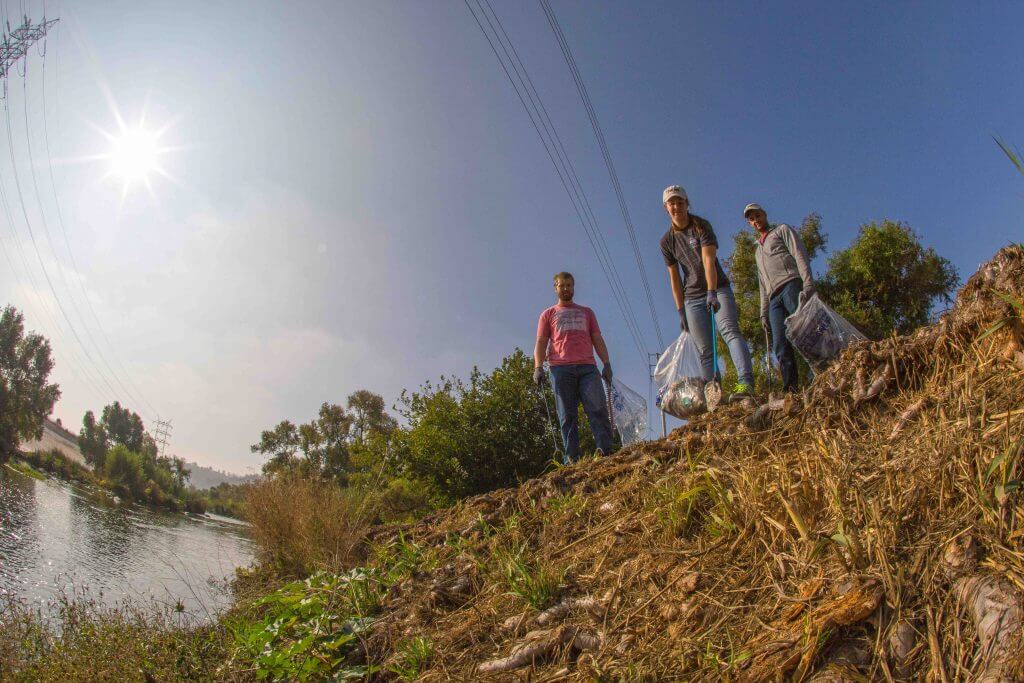
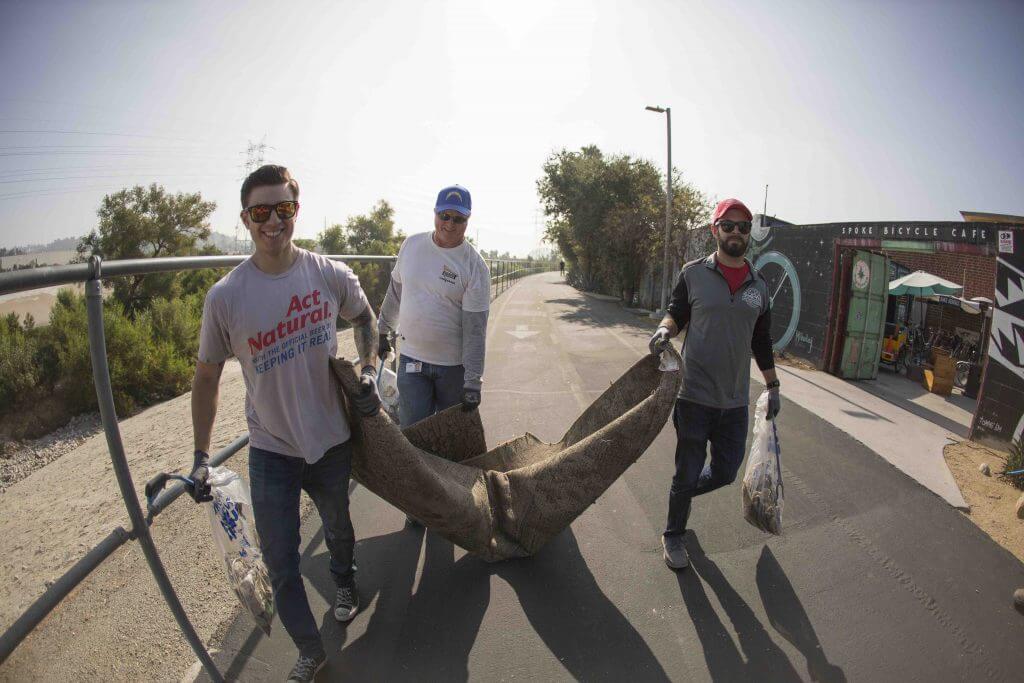
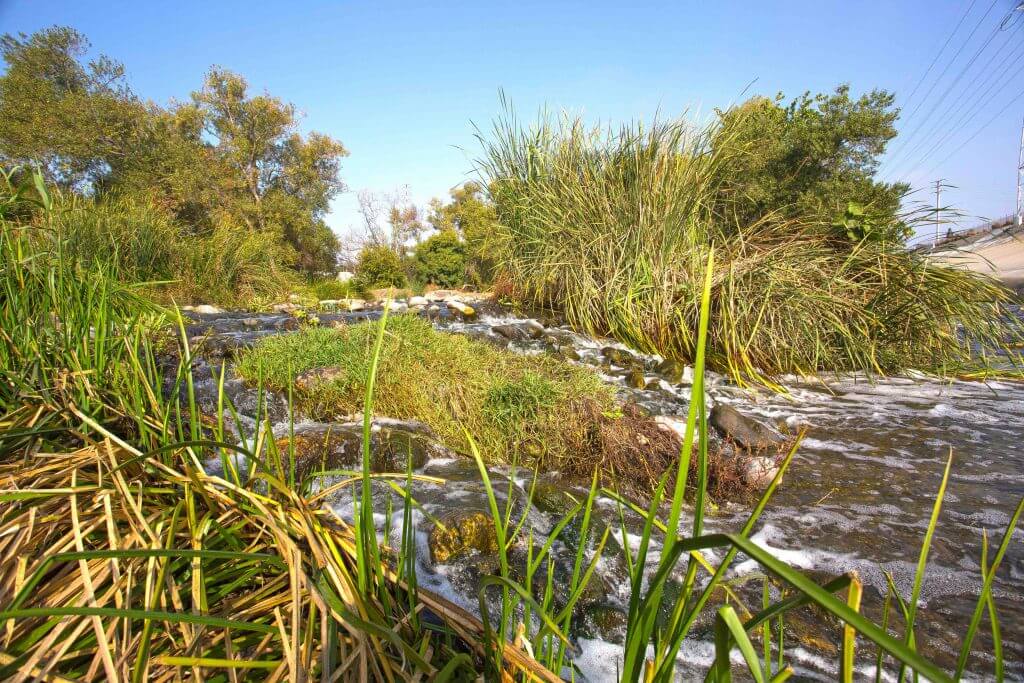
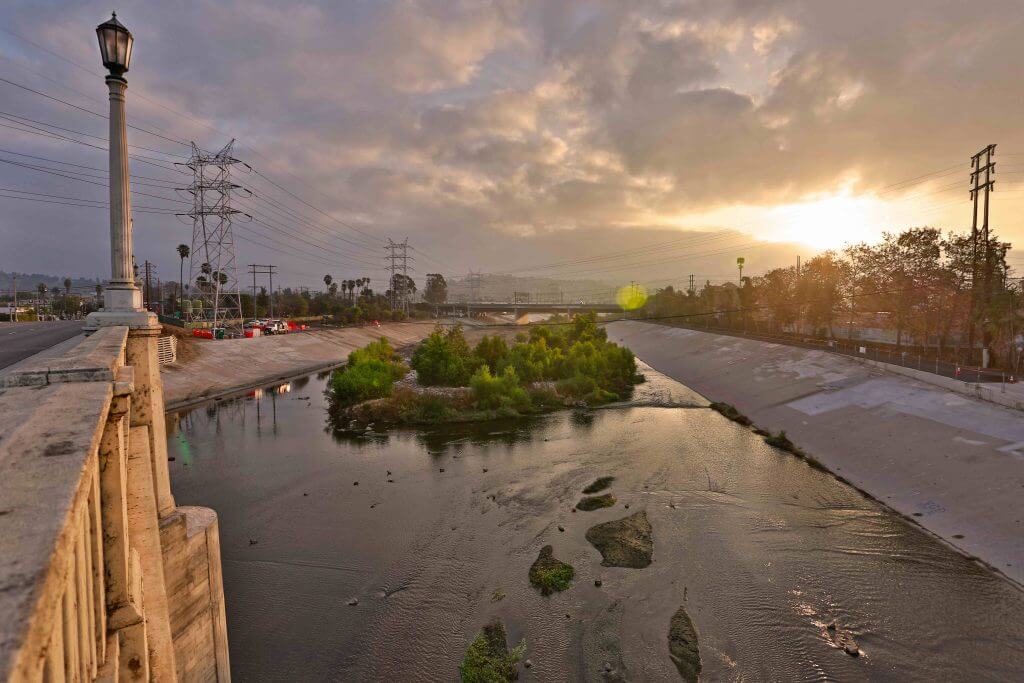
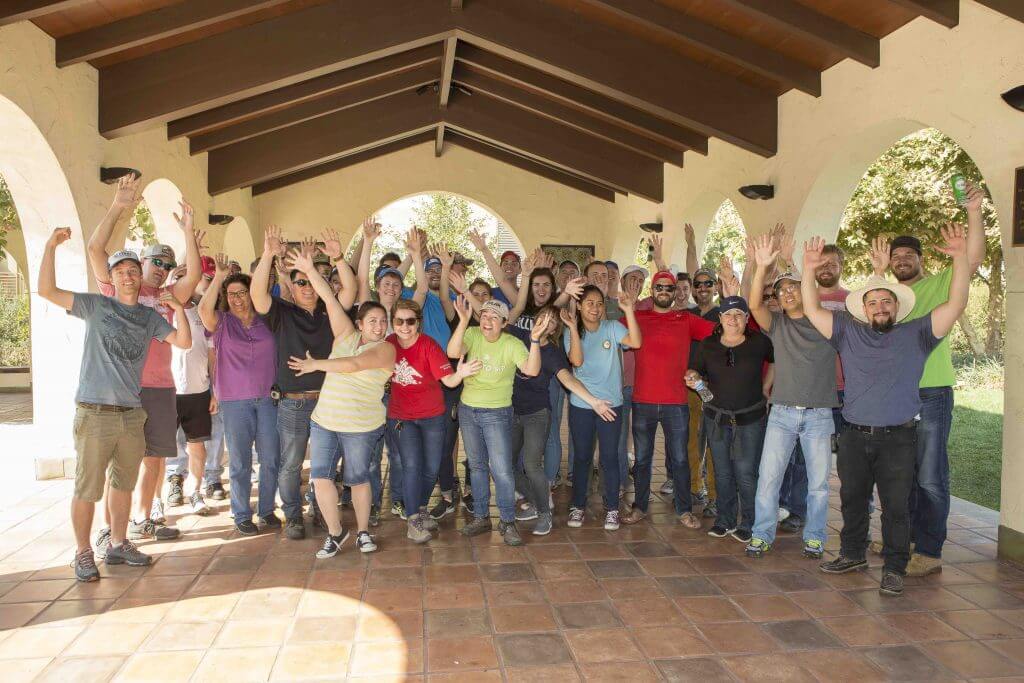



Beautiful read Bridget. You have a gift. Thank you for sharing it.